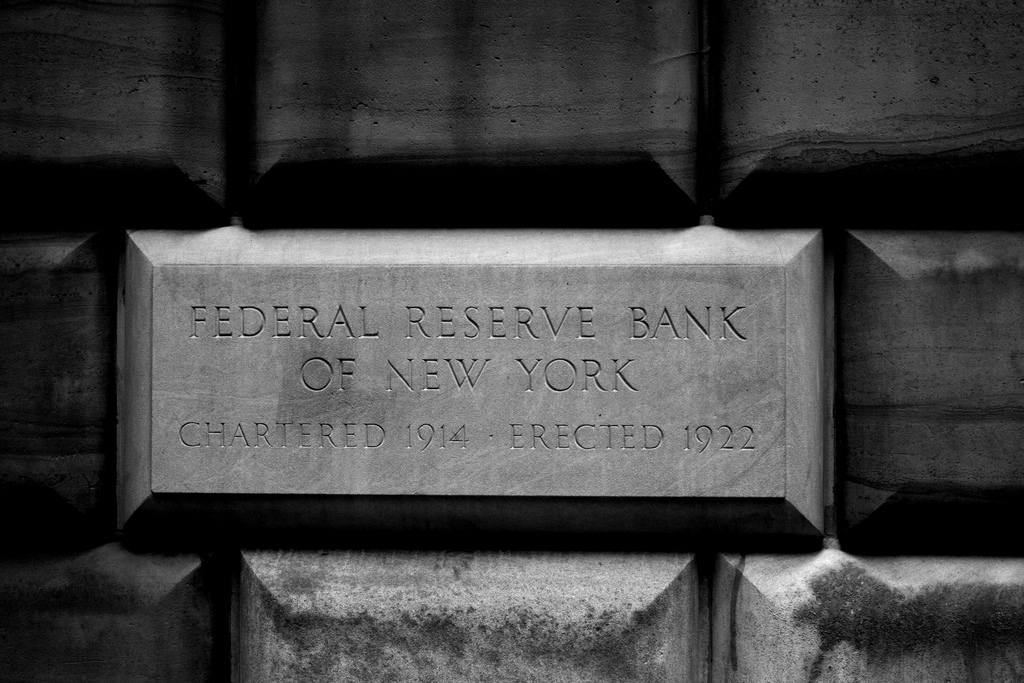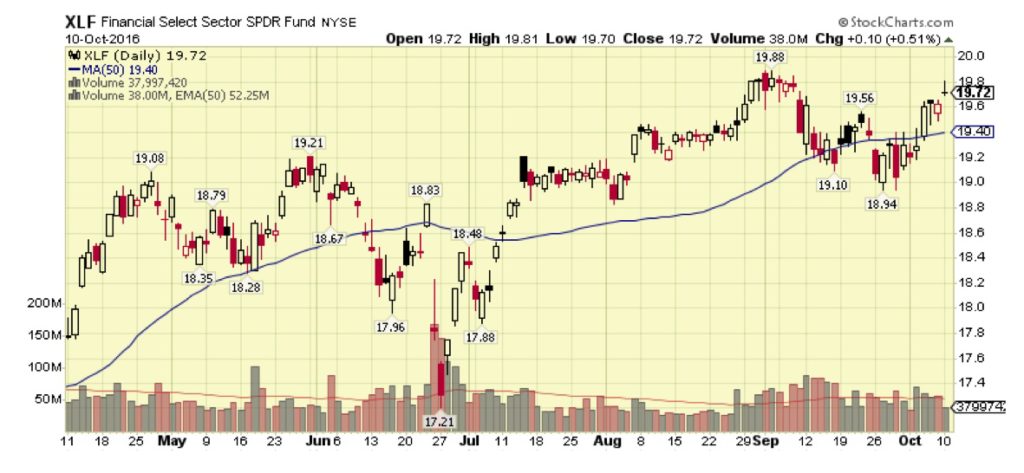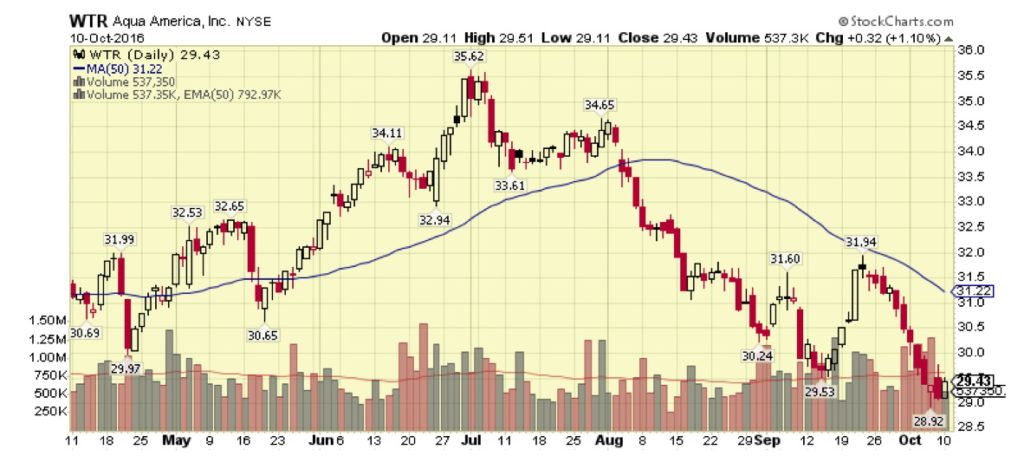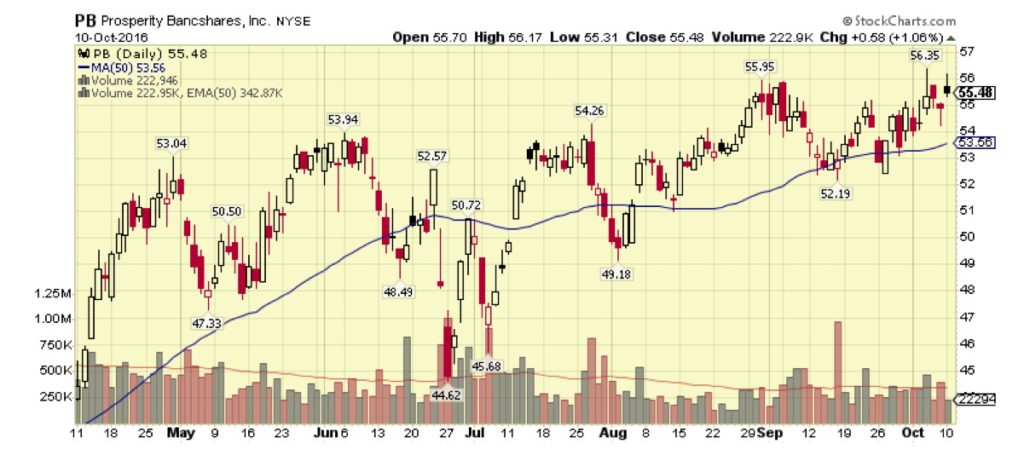The markets are expecting the Fed to increase rates by 0.25% in December. Photo: Flickr.com/Eflon
The financial world has been focused on what the Federal Reserve will do with interest rates through the rest of the year and into 2017. Based on the price of futures that track the interest rate that the Fed controls, the market as a whole is predicting a 9% chance of a 0.25% interest rate hike by the first week of November, but a 70% chance of a 0.25 – 0.50% interest hike after the election in December, based on Wednesday’s data.
In anticipation of this rise in interest rates, many dividend growth stocks have been affected because the yields on dividend stocks have to compete with the “risk free” interest rate on Treasury notes and bonds.
Here’s the chart of the S&P Dividend Aristocrats ETF, NOBL:
Notice that it has put in a series of lower highs since mid-July, reflecting the sell off of dividend stocks due to a near term interest rate hike. But not all sectors are built the same – utilities (XLU) have gotten hammered:
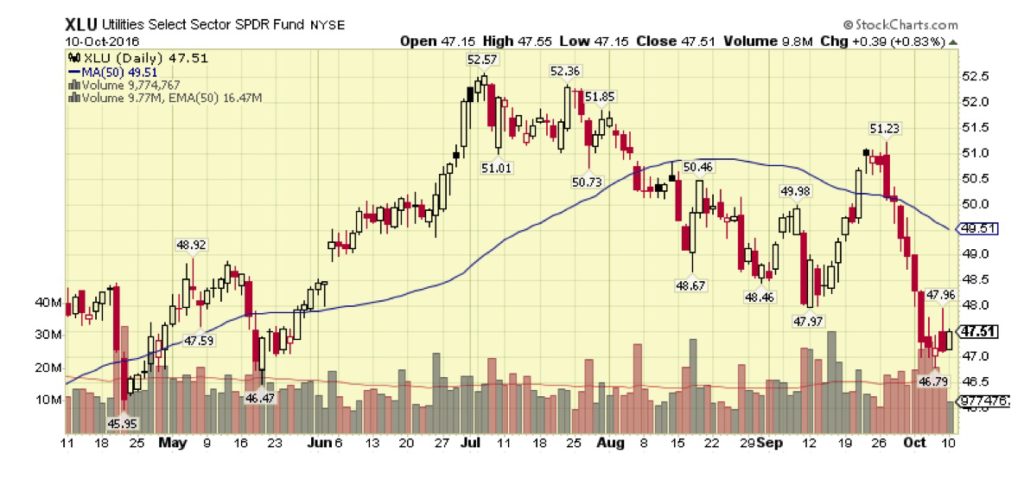
The Utilities SPDR ETF. Notice the series of lower lows and lower highs, except for towards the end of September. This temporary high was short-lived, as the ETF dropped for 7 days in a row.
…while financials (XLF) have held up pretty well:
Why is this happening? Utilities are known for being a “safe” play; most of them are heavily regulated by municipal authorities and able to get modest rate increases over time. This allows them to gradually increase earnings and, in some cases, gradually increase their dividend payouts. In contrast, they are not known for their quick moves or rapid growth. The bottom line is that they’re usually bought for their yield. In general, they compete with other income investments including U. S. Government debt (i.e., Treasury bills, notes and bonds). So utility stocks get sold off as investors shift funds towards the less risky U. S. Government debt. This, in turn, drives up yields. Here are three dividend growth utility stocks that are seeing similar weakness in their charts.
Aqua America (WTR):
Atmos Energy (ATO):
WGL Holdings (WGL):
Contrast this with where most financial companies create their earnings. Banks (in particular smaller to mid-size regional banks) borrow money from depositors and loan out money to borrowers at higher rates. Their earnings are directly related to the difference between the interest they pay to depositors and the interest they collect from borrowers. When interest rates are low, the spread between these two interest rates gets compressed and bank earnings drop. The only way for banks to increase earnings is to expand their loan portfolio. The good news for banks (but not for the country, I think) is that with rates at record lows, people are more willing to borrow. With interest rates expected to rise, bank shares are stabilizing and some of the charts are starting to show signs of health. The charts of dividend growth companies Prosperity Bancshares (PB) and Cullen/Frost Bankers (CFR) look nearly identical:
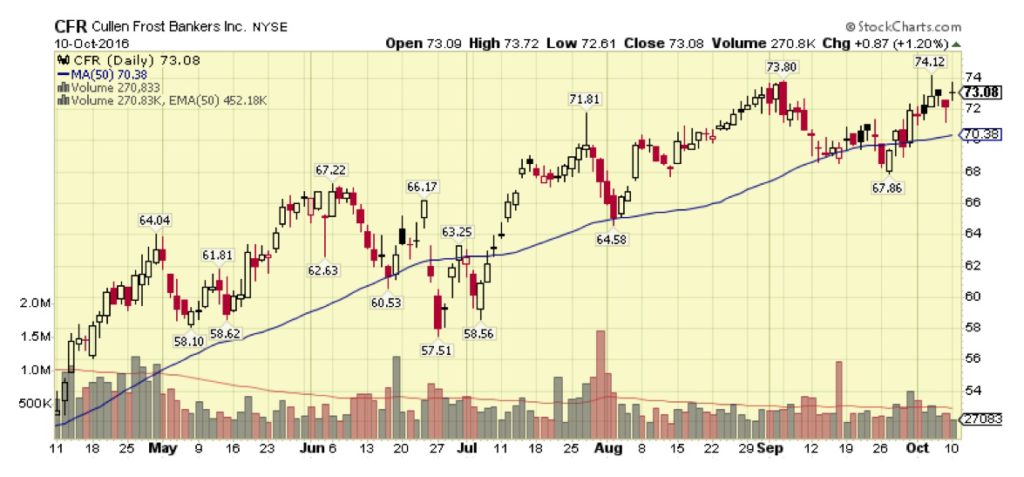
The charts for PB and CFR. Notice here that both charts are similar to XLF, with higher highs and higher lows.
Depending on your strategy and interest, you can look at the drop in utility companies as a buying opportunity and a change to pick up dividend growth stocks at higher yields. Alternatively, you can look at the reaction of regional banks as an opportunity to pick up some dividend growth companies as their stock prices move up.
All charts courtesy Stockcharts.com.
